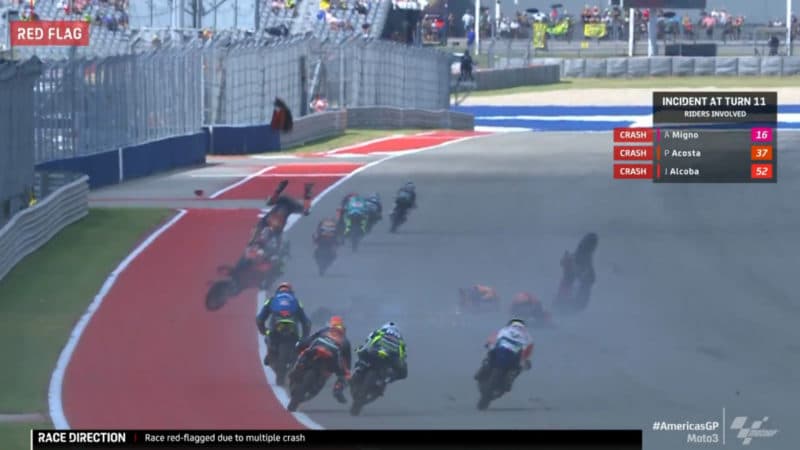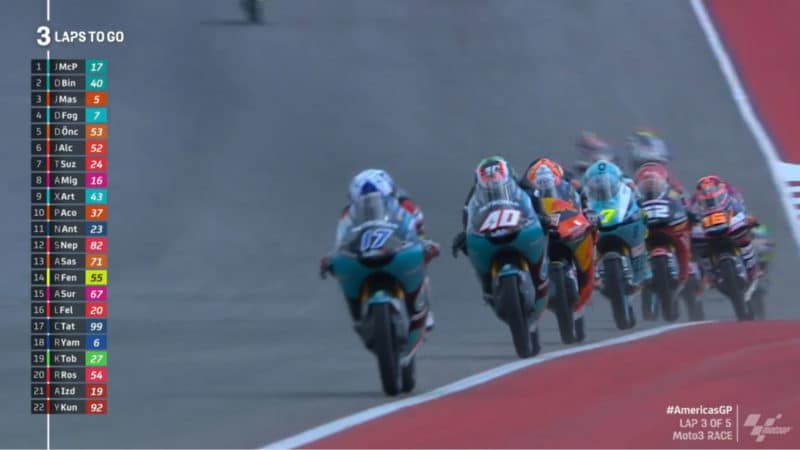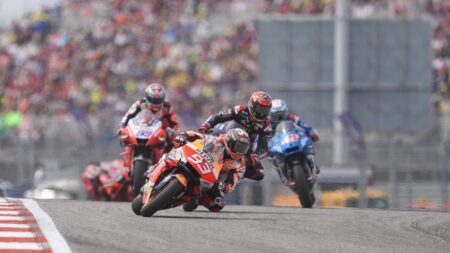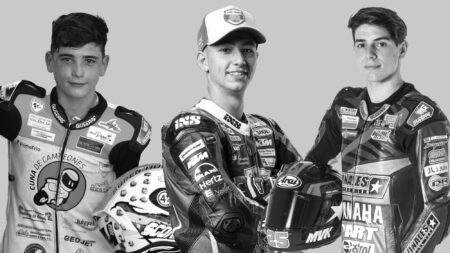So, if Öncü’s move wasn’t super-aggressive were the FIM stewards correct to give the 18-year-old Turkish rider a two-race ban, two weeks after he was allowed to race at Misano the day after being knocked out cold for at least ten minutes?
The sanction was harsh but necessary because the stewards and Dorna have lost control of Moto3 and need to reassert their authority swiftly and decisively.
Therefore Öncü was not so much punished for his deed but “pour encourager les autres”, to encourage the others to ride more safely.
(This French phrase comes from the 18th century, when British Admiral John Byng was executed for failing to break a French siege of the island of Menorca, then in British hands. Byng’s execution features in Voltaire’s play Candide. “In this country it is found good, from time to time, to kill one admiral to encourage the others,” a British officer tells Candide.)
Öncü’s two-race ban was much less unfair than Byng’s execution, but it signals a better-late-than-never change of attitude from the FIM stewards. Race bans will hopefully encourage Moto3 riders to think more carefully about what they’re doing. Grid penalties and long-lap penalties have proved entirely ineffective, because riders can still win races under these sanctions.
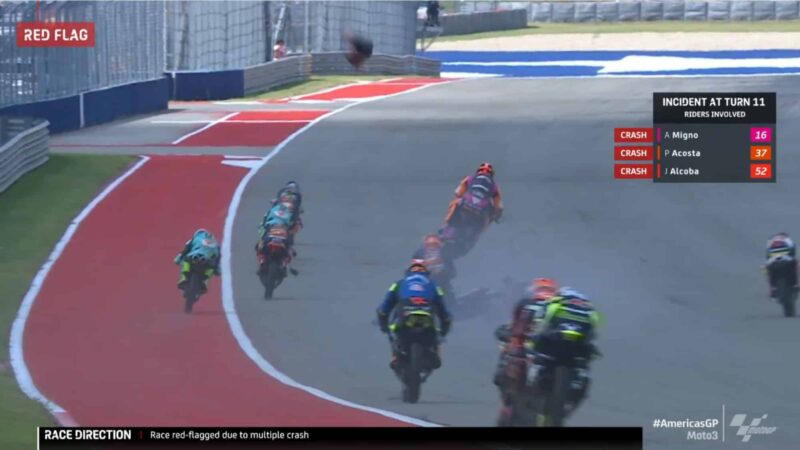
Migno hits Alcoba’s fallen bike and is fired skywards
Dorna Sports, S.L.
“For me the penalty is right because they [the FIM stewards] have to do something, because the situation is completely out of control,” said Rossi, who won the 125cc world championship, the forerunner of Moto3, in 1997. “Öncü moved on the straight when he knew he had another rider to his side and caused a crash that was potentially a mortal crash.
“I was very, very scared for everybody – they are very lucky nothing happened. The stewards have to do something serious for these young guys – they have to stay at home and not race.
“Motorcycle racing is too dangerous to have this behaviour on the track. You need to respect your safety and the safety of your rivals. This is the most important thing – more important than gaining one position – because you are playing with the lives of other young guys.”
Reigning MotoGP world champion and 2017 Moto3 world champion Joan Mir agreed.
“Deniz didn’t do that on purpose and he’s not the only one that does this manoeuvre,” said Mir. “I think the penalty is not only for his manoeuvre, it’s more to stop the others doing this. It’s a model punishment, so I agree with it.
“We cannot have these manoeuvres anymore. We’ve lost a lot of kids this year and today we almost lost another one. So we have to take some good decisions because in these small categories the bikes are so easy and the groups are so big that it’s becoming so, so, so dangerous.
“I wasn’t happy before my race – it’s not easy for the riders to see such a crash. I don’t know what the correct measures will be, but we need them soon because if not something bad will happen again.”
All three podium finishers – Marc Márquez, Fabio Quartararo and Pecco Bagnaia – also agreed with the Öncü sanction.

Migno, Acosta and Alcoba walk away from the crash, essentially unharmed
Dorna Sports, S.L.
Although the FIM stewards have now made their attitude clear on straight-line behaviour it’s important to remember that this year’s two Moto3 fatalities didn’t happen on straights. They both happened when riders fell while cornering and were hit by riders following very close behind, an entirely normal situation in Moto3 that still needs to be addressed.
Even before practice began at COTA riders were talking about the dangers of racing, particularly in the smaller classes – Moto3 and World Supersport 300 – which claimed the life of 15-year-old Dean Berta Viñales the previous weekend at Jerez.
